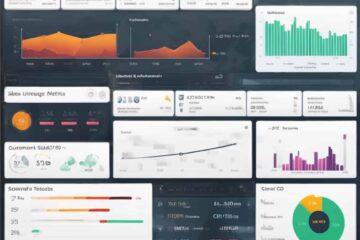As a field sales representative, you play a crucial role in driving sales and revenue for your organization. Hence, enhancing your skills in this competitive field is necessary to stay ahead of the game.
In this blog post, we will explore effective strategies and tips to help you improve and excel in your role as a field sales rep. From mastering the art of communication to leveraging technology and data-driven insights, we will cover key areas to focus on to boost your performance and achieve success in your sales career.
Factors That Impact Performance in Field Sales
As a field sales representative, your goal is to enhance your skills and boost your performance continually. Understanding the key factors that can impact your success is crucial in navigating the challenges of the sales environment and excelling in your role.
Here, we outline five significant factors that influence field sales performance, each playing a pivotal role in the journey towards sales excellence.
A. Industry Trends
By recognizing shifts in market dynamics and consumer preferences, you can tailor your sales strategies to meet changing needs. This adaptability keeps you competitive and can significantly enhance your sales performance.
B. Personal Development and Training
Continuous personal development through training, workshops, and self-improvement activities is fundamental for growth. These opportunities allow you to hone your skills, stay motivated, and adapt to industry changes, setting you apart as a top-performing sales representative.
C. Client Relationships
Building and maintaining strong relationships with clients is foundational. Understanding their needs, providing tailored solutions, and establishing trust can lead to sustained success and repeat business.
D. Product Knowledge
This knowledge enables you to confidently address client concerns, highlight benefits effectively, and tailor your pitch to the specific needs and interests of each prospect.
E. Time Management and Planning
These are key to maximizing your productivity. Prioritizing tasks, planning your route efficiently, and managing your schedule wisely can help you reach more clients and close more deals.
Now that we’ve explored the crucial factors influencing field sales performance, let’s shift our focus to specific tips and techniques.
These strategies are designed to help you further enhance your skills as a sales representative, ensuring you’re well-equipped to tackle the challenges of the field and achieve your sales goals.
1. Mastering Product Knowledge for Sales Success
This means having a comprehensive understanding of the product or service you’re selling, including its features, benefits, and unique selling points.
This deep understanding allows you to confidently communicate the value of your product to potential customers, addressing their needs and questions accurately.
Being well-versed in your product or service boosts your confidence and builds trust with your customers. It enables you to tailor your sales pitch to highlight how your product can solve specific problems or meet unique needs, making your approach more personalized and effective.
Actionable Tips for Enhancing Product Knowledge
- Product Training Sessions: Regularly participate in product training sessions to stay updated on new features and use cases.
- Use the Product Yourself: Gain firsthand experience by using the product or service to understand its practical applications and benefits.
- Study Competitor Offerings: Understand your competitors’ products to highlight your own product’s advantages more effectively.
- Gather Customer Feedback: Listen to customer feedback and questions to identify common concerns and selling points you may not have considered.
- Create a Product FAQ: Compile a list of frequently asked questions and their answers to refine your pitch and anticipate customer inquiries.
With a solid grasp of your product’s ins and outs, you’re not just selling; you’re providing solutions that truly meet your customers’ needs.
2. Elevating Communication Skills for Field Sales Excellence
This means mastering the art of conveying your message clearly while actively listening and responding to your audience’s needs.
This process involves engaging in meaningful conversations where you listen, understand, and then speak in a way that resonates with your audience, facilitating a two-way exchange of information.
Effective communication is the foundation of trust and rapport in sales relationships, making it easier to identify and meet the needs of your customers.
It enhances your ability to sell and fosters long-term relationships with clients by ensuring that you’re seen as a trustworthy and reliable partner.
Actionable Tips for Enhancing Communication Skills
- Active Listening: Focus intently on what the customer is saying, showing that you value their input and are engaged in the conversation.
- Adapt Your Communication Style: Tailor your communication style to match that of your customer, making the interaction more comfortable and productive for them.
- Clear and Concise Messaging: Convey your messages in a clear and concise manner to avoid misunderstandings and maintain the interest of your customers.
- Ask Insightful Questions: Pose questions that prompt your customer to think deeply and provide you with valuable insights into their needs and preferences.
- Feedback Loop: Encourage and act on feedback from customers to improve your communication approach and build stronger relationships.
Mastering communication skills is about more than just talking; it’s about creating a connection that fosters trust, understanding, and mutual success in the sales process.
3. Crafting a Customized Sales Strategy for Diverse Customers
This means adjusting your sales strategy to suit the unique needs and preferences of different customer segments.
This strategy involves identifying the distinct characteristics of each customer type and modifying your pitch, communication style, and interaction based on those insights.
Customizing your approach allows you to connect more deeply with various customers, making your sales pitch more relevant and compelling to them.
It’s a strategic method to increase engagement, build trust, and enhance your chances of closing deals by showing customers that you truly understand their unique needs and can provide tailored solutions.
Actionable Tips for Customizing Your Sales Strategy
- Clarify Benefits: Make sure to articulate the specific benefits of your products or services in a way that resonates with each customer segment.
- Engage with Open-Ended Questions: Use open-ended questions to delve deeper into the customer’s needs, encouraging them to share more information.
- Customize Your Pitch: Adapt your sales pitch to highlight how your product or service meets the specific needs of each customer segment.
- Act on Feedback: Listen to customer feedback attentively and use it to refine your approach, addressing any concerns to improve their experience.
- Follow Up Timely: Maintain the momentum of your sales conversations with timely follow-ups, showing customers that you value their business and are attentive to their needs.
Being adaptable and empathetic in your sales approach is key to establishing lasting relationships and trust with customers, paving the way for increased sales success.

4. Maximizing Your Field Hours for Optimal Productivity
This refers to the strategic allocation and optimization of your working hours to enhance productivity and effectiveness.
This involves planning your day, prioritizing tasks, and leveraging tools and techniques to use your time more efficiently, ensuring that every hour counts towards achieving your sales goals.
Effective time management is crucial in field sales because it directly impacts your ability to meet and exceed sales targets. By optimizing how you use your time, you increase your productivity and reduce stress, allowing you to focus on building relationships and closing deals.
Actionable Tips for Effective Time Management
- Craft a Daily Schedule: Start each day with a clear plan that allocates specific times for meetings, travel, follow-ups, and administrative tasks.
- Set Clear, Achievable Goals: Define what you aim to achieve each day, week, and month to keep your efforts focused and aligned with your sales objectives.
- Utilize Technology Tools: Adopt CRM systems, scheduling apps, and other technology solutions to streamline your tasks and manage your time more efficiently.
- Prioritize Your Tasks: Determine which tasks are most critical to your sales success and tackle them first to ensure they receive your best effort and attention.
- Minimize Distractions: Identify common distractions that eat into your productive time and develop strategies to mitigate them during your work hours.
Mastering time management allows you to maximize your effectiveness as a field sales representative, turning every minute into an opportunity to move closer to your sales goals.
5. Harnessing the Power of Technology in Field Sales
This means using digital tools and platforms to streamline your sales processes, enhance productivity, and improve your overall performance.
By integrating technology like CRM software, scheduling apps, and virtual meeting platforms, you can automate routine tasks, manage your time more effectively, and engage with customers more efficiently.
Incorporating technology into your sales strategy is essential for staying competitive in today’s fast-paced market. It saves you time by automating administrative tasks and provides valuable insights into customer behavior, enabling you to tailor your sales approach for better results.
Actionable Tips for Embracing Technology in Field Sales
- Adopt CRM Software: Utilize CRM software to keep track of customer interactions, manage leads, and analyze sales data for better decision-making.
- Use Scheduling Apps: Implement scheduling apps to organize your appointments and routes, ensuring you make the most of your time in the field.
- Leverage Virtual Meeting Platforms: Incorporate virtual meeting platforms to connect with clients who are hard to reach in person, expanding your sales territory without additional travel.
- Stay Informed on New Tools: Regularly research and test new technology tools that can enhance your efficiency and effectiveness in field sales.
- Embrace Mobile Solutions: Make the most of mobile sales applications that allow you to access information and communicate with clients on the go, ensuring you’re always prepared.
Embracing technology is not just about keeping up with trends; it’s about leveraging these tools to make smarter sales decisions, enhance customer engagement, and ultimately drive success in the competitive field of sales.
6. Advanced Negotiation and Closing Tactics
Even if you excel at building rapport and identifying customer needs, mastering advanced negotiation and closing tactics is vital to sealing the deal effectively.
Successful negotiation involves understanding the psychology of buying, creating win-win solutions, and knowing when to push for a close. Implementing strategic techniques can help you navigate through objections and resistance, ultimately leading to successful sales conversions.
Negotiation Tactics
- Anchor Pricing: Setting a high initial price to anchor expectations and guide negotiations towards a favorable outcome.
- Emotional Intelligence: Understanding and managing emotions during negotiations to build trust and influence decisions.
- Power Dynamics: Recognizing power imbalances and adjusting strategies to assert influence without overpowering the client.
- Mirroring and Matching: Using similar language, tone, and body posture to create a rapport with the negotiation counterpart, fostering a sense of trust and understanding.
- BATNA Identification: Clearly defining your Best Alternative to a Negotiated Agreement before negotiations start to understand your options and thresholds, ensuring a stronger negotiating position.
Understanding Closing Tactics
- Assumptive Close: Assuming the sale is a done deal and proceeding with paperwork or next steps without directly asking for the close.
- Urgency Creation: Using time-sensitive offers or limited availability to prompt a quick decision and secure the sale.
- Alternative Choice: Presenting two options, both leading to a sale, to give the client a sense of control and increase commitment.
- Summary Close: Summarizing all agreed-upon benefits and values before making a final appeal for closure, reinforcing the buyer’s decision-making process.
- Feel-Felt-Found Method: Addressing objections by sharing experiences of past clients who felt the same, but found the solution beneficial after proceeding, to alleviate concerns and encourage a positive decision.

Final Thoughts | Boost Your Sales Skills
Elevate your field sales game by mastering communication, negotiation, organization, and product knowledge.
Continually updating your skills and staying on top of market trends are key to building strong customer relationships, closing more deals, and hitting your targets.
The path to becoming a leading field sales rep demands dedication. Take a giant leap forward by investing in premier field sales management software, and set yourself up for unparalleled success.




















